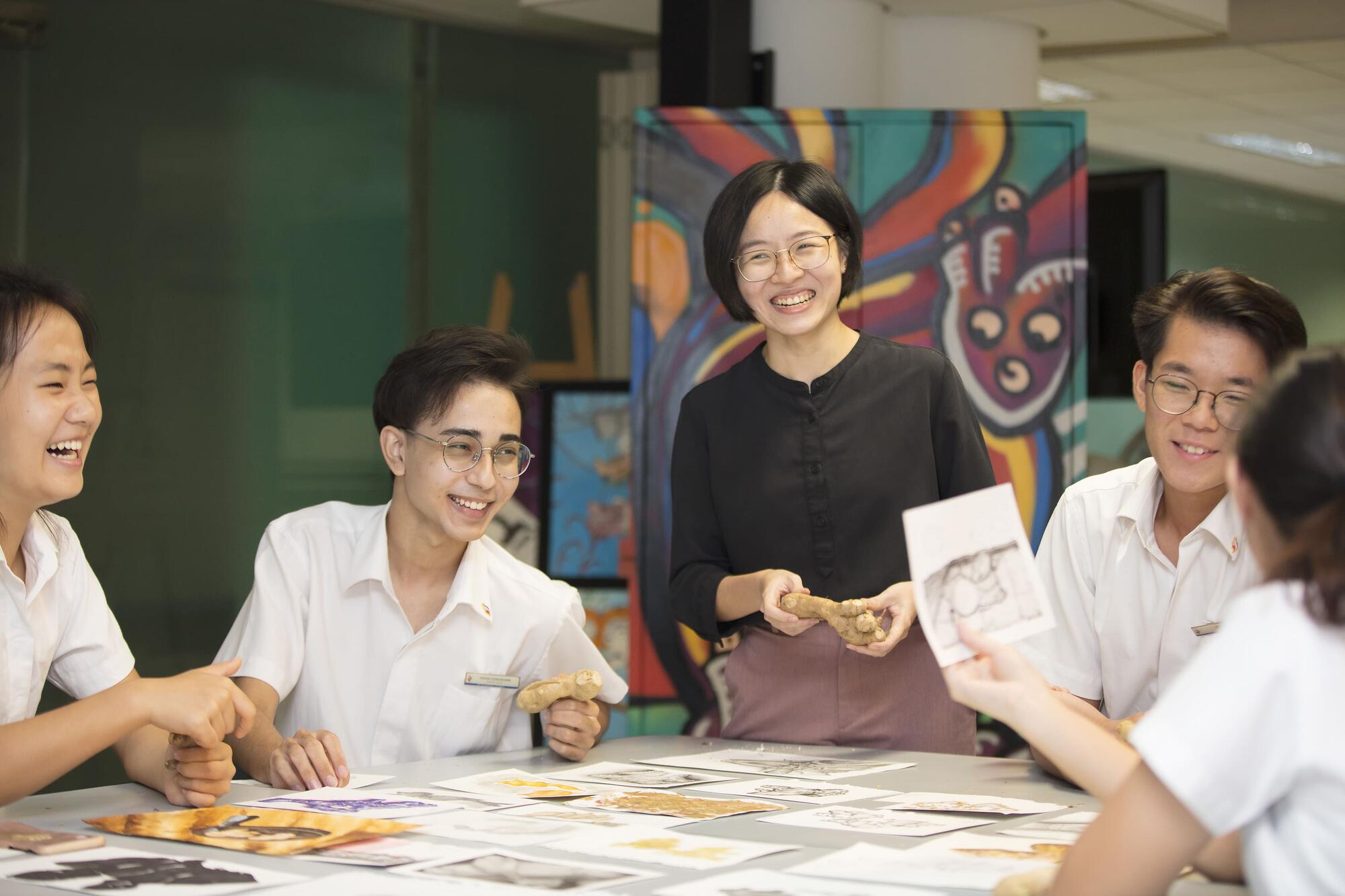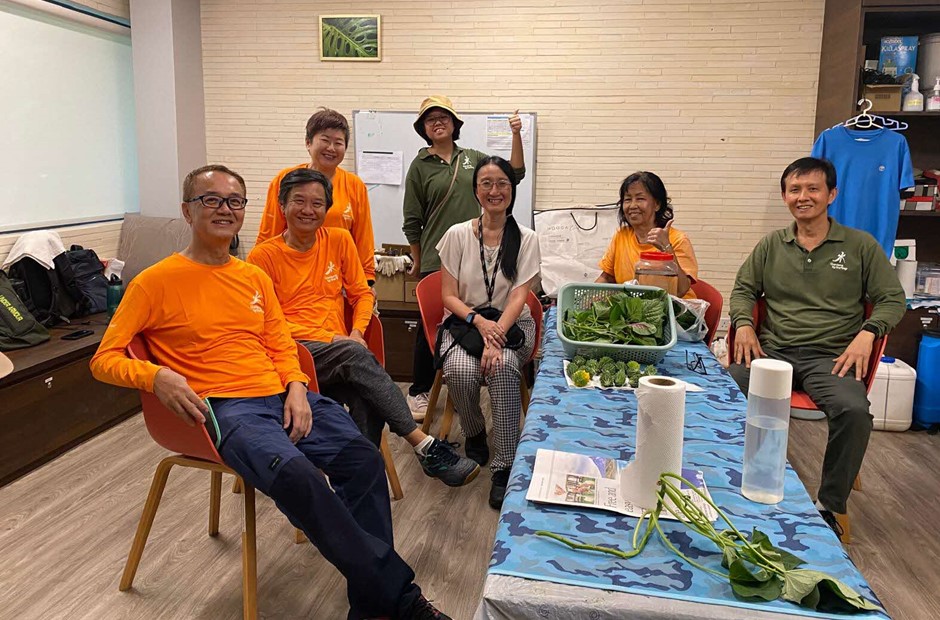Ms Chew Jia Li Joscelin, Yishun Innova Junior College, Outstanding Youth in Education 2022 Finalist
Tell us a story that captures the kind of teacher you are.
Some years ago while I was watching MasterChef, the cooking competition, the contestants were tasked to prepare the same dish in three different ways. I’m no cook myself but found the idea challenging and interesting.
“What would happen if I brought the same challenge to my art class?” Artists have long been finding new ways to challenge art tradition and our ways of seeing. The next thing I knew, I was handing over a piece of ginger to each student for scrutiny, and asking them to find 10 ways to express the item through different pieces in art.
This effort was not without some scaffolding as my students do come from varied backgrounds and have differing levels of exposure to art. I created a board full of prompts for them to be stimulated by, with different levels of difficulty. To guide them in developing their ideas, they had to make use of at least five baseline prompts, such as drawing within a set timeframe or drawing on a different surface.
After completion of the assignment, we had a gallery walk in class — a platform for students to talk about their work and the approaches they explored. One of the prompts given was “time”, which one student used for his work portraying a piece of ginger covered with many wide-opened eyes. He explained that when he kept on observing the ginger, he started imagining eyes looking back at him! For the same prompt, another student talked about how the ginger skin started to wrinkle over time, which told her to appreciate beauty in the transience of life.
 Discussing on ways to draw ginger.
Discussing on ways to draw ginger.
“Some students welcomed new ideas while others were bold in attempting something new, even incorporating ginger skin in their artwork!”
Ms Chew Jia Li Joscelin
This tiered assignment was aimed at catering to different strengths and interests. It awakened my students’ minds to different perspectives on the same matter. Some students welcomed new ideas while others were bold in attempting something new, even incorporating ginger skin in their artwork! The practice worked so well in opening their minds to new ideas that I continue to use it today. It also inspired me to constantly seek ideas from outside the school environment to motivate my students.
Describe a teaching method or tool you have found effective.
On a seemingly ordinary afternoon, my class may see me flash something like this during class:
“2B or not 2B!” or “Do you want 2B awesome at drawing?”
That is my cue to introduce the 2B Art Assessment Tool – a simple tool that I put together to help improve my students’ ability to understand what makes a good drawing, and how they can set standards for their own work.
Since I started teaching, drawing is one area of art that I find many students wish to improve in but are unsure how. Borrowing from a research model called Hattie and Timperley’s Effective Feedback model, this tool comprises an activity and discussion surrounding a set of art rubrics, followed by a self-assessment component. Students work in groups to first observe a series of images, then sort and match them to the criteria and descriptors in the given rubrics.
For instance, students look at a hand drawing and may decide that it has good tonal quality, which is one of the key aspects of drawing and painting. If the drawing possesses a range of dark, mid, and light tones, the colour contrast further adds to the realism of the picture. Students then peg this drawing to a higher score within the rubric and discuss why they did so. We learnt to use words such as “proportion” and “rendering (appearance of a 3D effect)” for a common basis of understanding.
As a result, they can appraise their strengths, and areas for improvement in their own work. The tool also helps me see what my students aim to achieve, and I can consider what elements to include or tweak in my subsequent lessons in helping them to work towards their goals.
Using this tool, one student saw a marked improvement in her hand drawings. She paid closer attention to the accuracy of her drawing proportions, and did away with sketching outlines, both of which would give her a higher score based on the rubric. After ten months, she made a jump from an ‘overall borderline’ score within the rubric to the ‘good’ range. I could see the delight and increased confidence in her as she shared with me her reflections and progress.
Which school project or initiative are you especially proud of?
Furthering this mission were other student-led segments that I introduced to the Refresh Programme, such as art jamming, Korean language learning, coding, and an appreciation for Wushu and cultural practices. With opportunities come learning, evident in the way my student reflected that they “learned during art jamming that what we planned will not always go smoothly and we have to improvise and come up with solutions on the spot”. I believe their confidence and positivity grew each time they found solutions and overcame hurdles.
 Outdoor sketching with iPads.
Outdoor sketching with iPads.





-(1).jpg)
